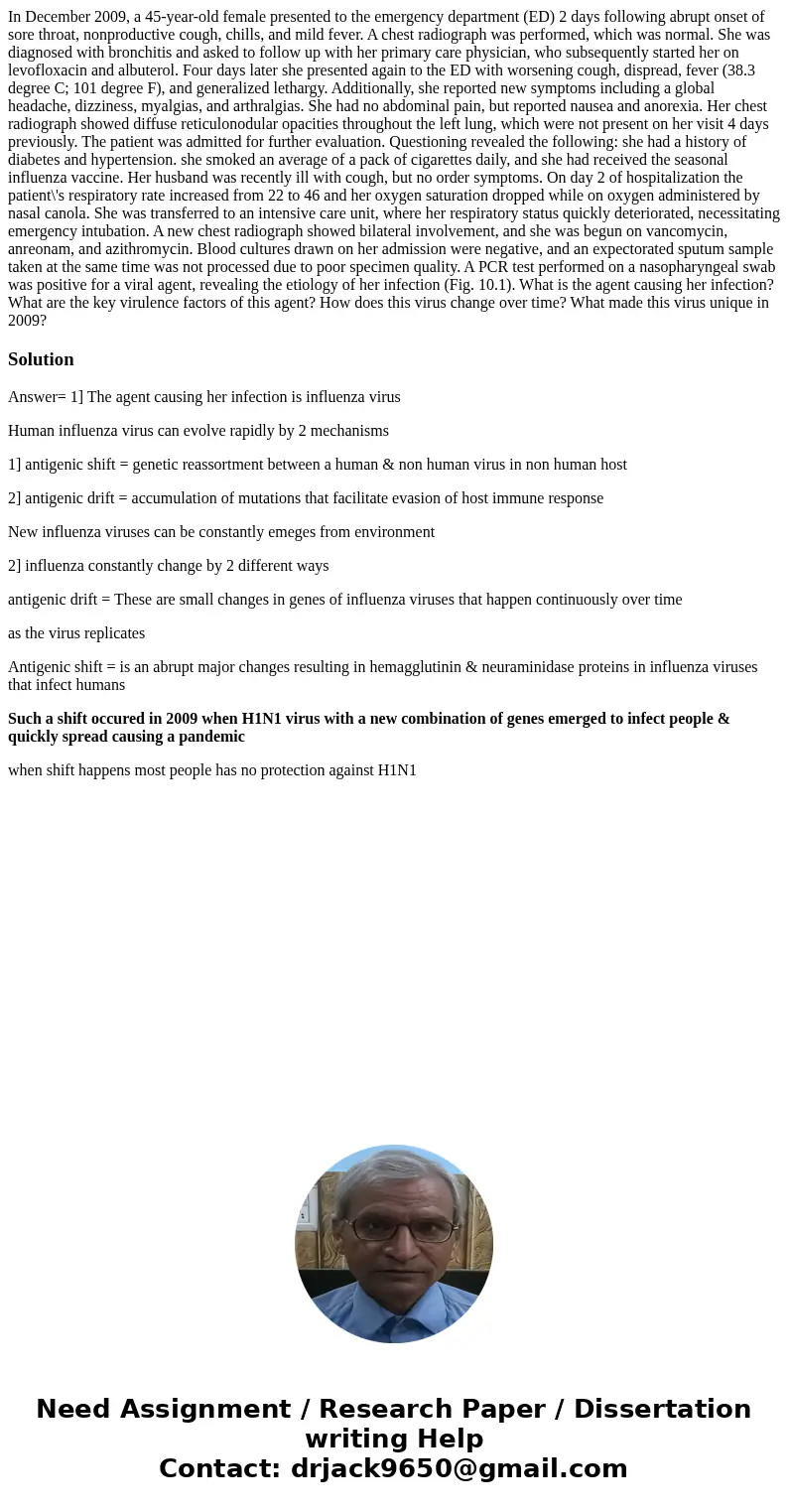In December 2009, a 45-year-old female presented to the emergency department (ED) 2 days following abrupt onset of sore throat, nonproductive cough, chills, and mild fever. A chest radiograph was performed, which was normal. She was diagnosed with bronchitis and asked to follow up with her primary care physician, who subsequently started her on levofloxacin and albuterol. Four days later she presented again to the ED with worsening cough, dispread, fever (38.3 degree C; 101 degree F), and generalized lethargy. Additionally, she reported new symptoms including a global headache, dizziness, myalgias, and arthralgias. She had no abdominal pain, but reported nausea and anorexia. Her chest radiograph showed diffuse reticulonodular opacities throughout the left lung, which were not present on her visit 4 days previously. The patient was admitted for further evaluation. Questioning revealed the following: she had a history of diabetes and hypertension. she smoked an average of a pack of cigarettes daily, and she had received the seasonal influenza vaccine. Her husband was recently ill with cough, but no order symptoms. On day 2 of hospitalization the patient\'s respiratory rate increased from 22 to 46 and her oxygen saturation dropped while on oxygen administered by nasal canola. She was transferred to an intensive care unit, where her respiratory status quickly deteriorated, necessitating emergency intubation. A new chest radiograph showed bilateral involvement, and she was begun on vancomycin, anreonam, and azithromycin. Blood cultures drawn on her admission were negative, and an expectorated sputum sample taken at the same time was not processed due to poor specimen quality. A PCR test performed on a nasopharyngeal swab was positive for a viral agent, revealing the etiology of her infection (Fig. 10.1). What is the agent causing her infection? What are the key virulence factors of this agent? How does this virus change over time? What made this virus unique in 2009?
Answer= 1] The agent causing her infection is influenza virus
Human influenza virus can evolve rapidly by 2 mechanisms
1] antigenic shift = genetic reassortment between a human & non human virus in non human host
2] antigenic drift = accumulation of mutations that facilitate evasion of host immune response
New influenza viruses can be constantly emeges from environment
2] influenza constantly change by 2 different ways
antigenic drift = These are small changes in genes of influenza viruses that happen continuously over time
as the virus replicates
Antigenic shift = is an abrupt major changes resulting in hemagglutinin & neuraminidase proteins in influenza viruses that infect humans
Such a shift occured in 2009 when H1N1 virus with a new combination of genes emerged to infect people & quickly spread causing a pandemic
when shift happens most people has no protection against H1N1

 Homework Sourse
Homework Sourse